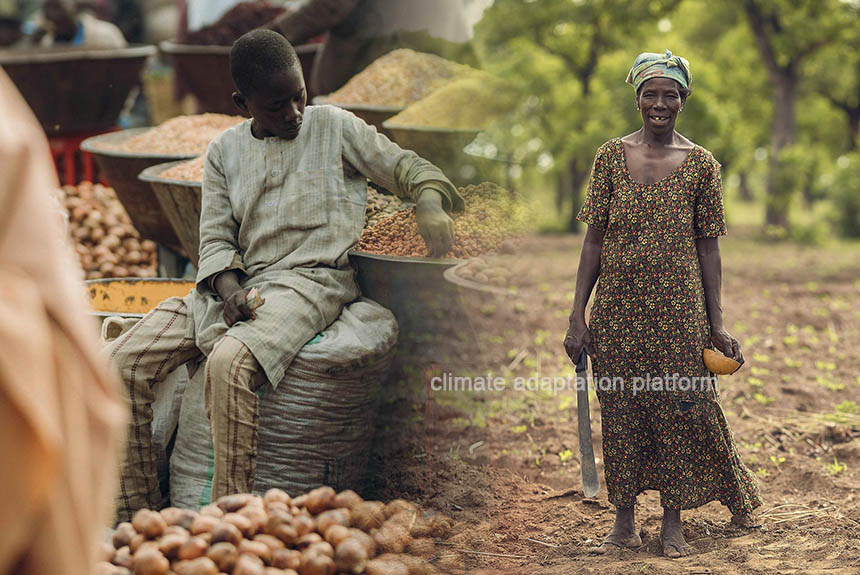Access to reliable weather forecasts and climate data will be crucial to farmers worldwide to help them adapt to the changing climate.
Kenya’s lingering droughts have immensely impacted its communities. Kenya’s economy is mainly dependent on rainfed agriculture and tourism, and its position as East Africa’s financial, trade, and communications centre makes it highly vulnerable to climate change and extreme weather events such as droughts or lack of rain.
USAID highlights the country’s ambitious climate goals articulated in its 2020 Nationally Determined Contributions (NDC), which committed Kenya to reduce 32% of its GHG emissions by 2030. The US agency notes that the government has “put in place measures to pursue a low carbon and climate-resilient development pathway to help transform Kenya into a newly industrialising, middle-income country,” calling it “a leader in addressing climate change” and “one of the first countries in Africa to enact a comprehensive law and policy to guide national and subnational climate action.”
USAID supports Kenya’s development and climate priorities, which included leveraging $8.1 billion invested by the government to implement the Ending Drought Emergencies framework (2012-2020) in a multi-sectoral and integrated approach, and other programs and partnerships that address climate adaptation, resilience-building, particularly in its agriculture sector, increasing renewable energy capacity, conservation and protection of its natural environment, and nature-based solutions to climate change.
Kenya is a country within the region known as the Horn of Africa, a historically significant trade route connecting the region’s commerce with the rest of the ancient world.
Aljazeera reports that between late 2020 and early 2023, the Horn of Africa suffered five failed rainfall seasons and the worst drought in 40 years. As a result, seven million children under the age of five in Ethiopia, Kenya, and Somalia became malnourished, and intervention is desperately needed.
The news article also shows how local farmers adapt to these droughts. For instance, a local volunteer checks and keeps a daily record of the rain gauge for the Kenya Meteorological Department, where a technician feeds the information, among other data, into a digital global system for the World Meteorological Organisation.
ICPAC, a regional climate centre accredited by the World Meteorological Organization, breaks down and analyses data from the global system to inform farmers of seasonal, monthly, and weekly forecasts, seasonal outlooks, and early warning systems for 11 countries. Farmers are also advised on crops to plant or those suitable for the climate. Drought-tolerant or good alternative crops include mung beans, groundnuts, macadamia trees, and hay.
Radio broadcasts are the most common and crucial source of information in East African countries. Journalists are trained to better understand and present otherwise technical climate information clearly and easily for farmers and communities, which could help inform and guide their farming decisions.
A study on Kenyan Farmers’ use of climate adaptation strategies
The study, published in March 2023, investigates the factors influencing the choices of 540 farmers from six counties on their climate adaptation strategies choices and their effects on their food security. The study shows these four major climate adaptation strategies. It comes in the order of their popularity of choice among farmers: planting drought-tolerant crop varieties (55%), growing diversified crops (34%), growing early maturing crops (22%), and diversifying the sources of household income (18%). The study finds that age (younger farmers), education level, family size, land size, farm income, extension contact, training, and information access correlate positively with applying climate adaptation strategies. Those who implement them have higher food security – between 7 to 11%, than those who do not, and the more adaptation strategies farmers implement, the higher their food security becomes.
The positive association between implementing climate adaptation strategies and food security in Kenya affirms the critical role of adaptation in the region in the face of increasing threats from the changing climate.
Source:
Kenya Climate Change Country Profile. (2023, November 29). USAID. Retrieved from https://www.usaid.gov/climate/country-profiles/kenya
Jernberg, O., & Karstad, I. (2023, December 15). Adapting in the face of climate change in rural Kenya. Aljazeera. Retrieved from https://www.aljazeera.com/gallery/2023/12/15/adapting-in-the-face-of-climate-change-in-rural-kenya
Gebre, G. G., Amekawa, Y., Fikadu, A. A., & Rahut, D. B. (2022). Farmers′ use of climate change adaptation strategies and their impacts on food security in Kenya. Climate Risk Management, 40, 100495. https://doi.org/10.1016/j.crm.2023.100495



Leave a Reply